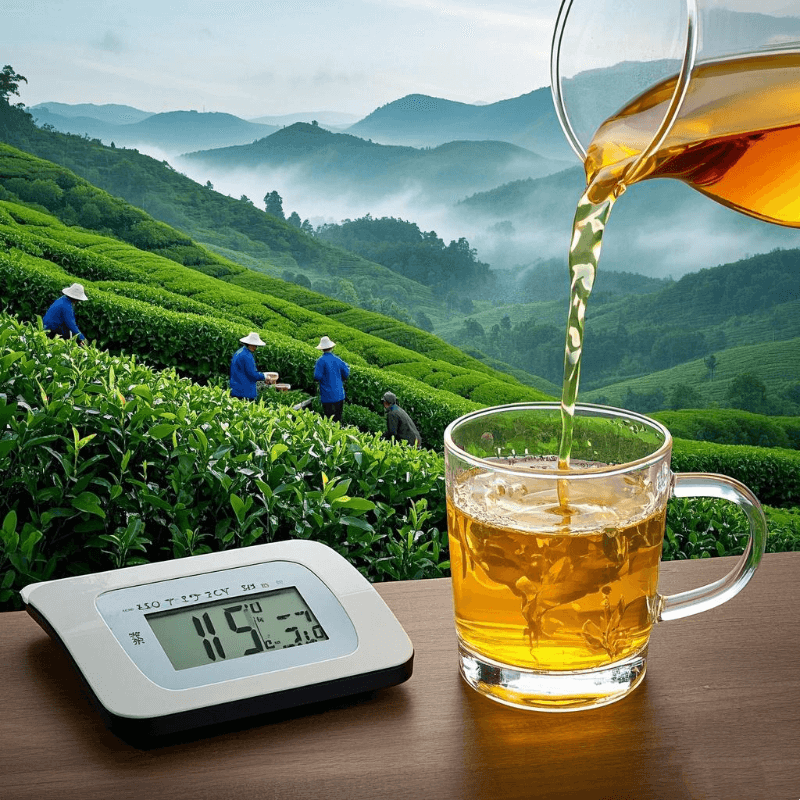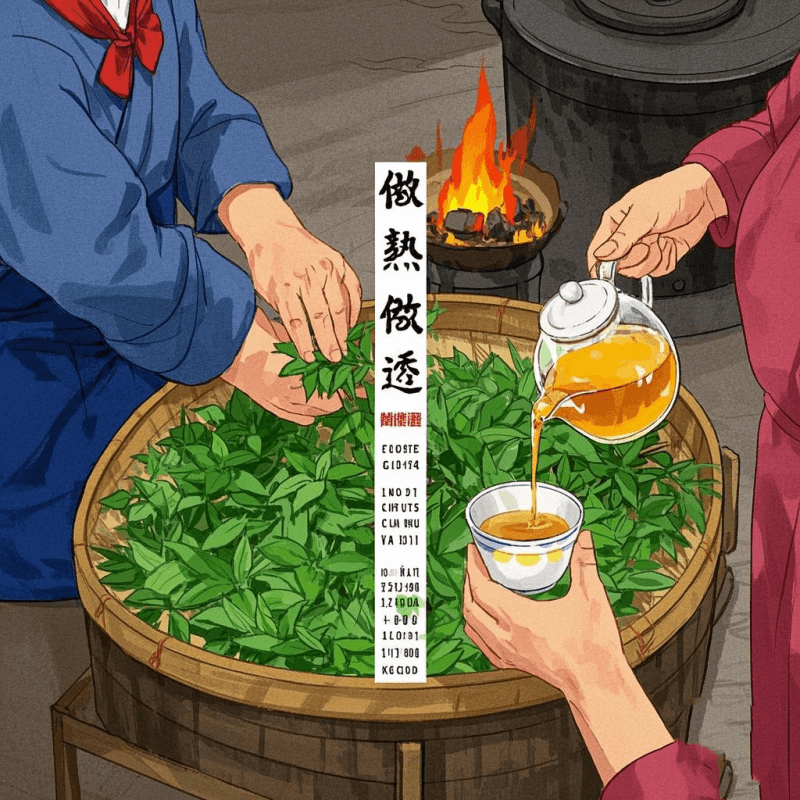
In the realm of specialty teas, oolong tea stands out for its complex flavors and balanced energy-boosting properties. But a common question lingers among both casual drinkers and connoisseurs: how much caffeine in oolong tea is there, and how does it impact your daily routine? Understanding the caffeine content in this beloved brew isn’t just about satisfying curiosity—it’s about making informed choices that align with your health and lifestyle goals.
This comprehensive guide will break down the science behind how much caffeine in oolong tea you can expect, how it compares to other beverages, and what its presence means for your body and mind. Whether you’re seeking a gentle morning lift or a mid-afternoon pick-me-up, decoding this key factor will enhance your appreciation for oolong tea’s unique advantages.
1. Introduction: Why Caffeine Content in Oolong Tea Matters
Caffeine is a central nervous system stimulant that affects everyone differently, depending on tolerance, metabolism, and consumption timing. For oolong tea drinkers, knowing how much caffeine in oolong tea is critical for:
- Avoiding unwanted side effects like jitters or disrupted sleep
- Maximizing cognitive benefits like focus and alertness
- Incorporating this brew into a balanced wellness routine
Unlike coffee, which delivers a sharp caffeine spike, oolong tea offers a smoother, more sustained energy boost—thanks to its unique combination of caffeine and L-theanine, an amino acid that promotes relaxation without drowsiness. By demystifying how much caffeine in oolong tea you’re consuming, you can harness its benefits while minimizing risks.
2. How Much Caffeine in Oolong Tea? A Data-Driven Breakdown
The caffeine content in this semi-oxidized tea is influenced by its processing, but it generally falls within a predictable range. On average, an 8-ounce cup of brewed oolong tea contains 30–50 milligrams (mg) of caffeine—significantly less than coffee (95–200mg per cup) but slightly more than green tea (20–45mg).
Caffeine Content by Oxidation Level
Oolong tea’s oxidation range (10–80%) impacts both flavor and caffeine extraction:
| Oxidation Level | Example Teas | Caffeine per 8oz (mg) | Key Characteristics |
| Light (10–30%) | Alishan High Mountain | 30–40 | Floral, delicate, lower caffeine |
| Medium (30–60%) | Phoenix Dan Cong | 40–45 | Balanced, nutty, moderate caffeine |
| Heavy (60–80%) | Da Hong Pao (Wuyi Rock) | 45–50 | Roasted, bold, slightly higher caffeine |
A 2019 study in the Journal of Agricultural and Food Chemistry analyzed 35 oolong tea samples and found that while oxidation affected flavor compounds, caffeine levels remained relatively consistent across the spectrum, with most samples clustering around 40–45mg per cup.
3. Comparing Oolong Tea’s Caffeine to Other Popular Beverages
Understanding how much caffeine in oolong tea requires context. Here’s how this brew stacks up against other common drinks:
Caffeine Content Comparison Table
| Beverage (8oz serving) | Caffeine (mg) | Key Difference |
| Oolong tea | 30–50 | Moderate caffeine with L-theanine for calm focus |
| Black tea | 40–70 | Higher caffeine, more astringent |
| Green tea | 20–45 | Lower caffeine, more vegetal notes |
| Coffee (brewed) | 95–200 | Intense caffeine, potential for crashes |
| Energy drinks | 70–100 | High caffeine + sugar, short-lived energy |
| Decaffeinated tea/coffee | 2–5 | Minimal stimulation, ideal for evenings |
Oolong tea’s caffeine profile positions it as a “Goldilocks” option—not too strong, not too weak—making it suitable for those who want sustained energy without the harsh effects of stronger stimulants.
4. Factors That Influence Caffeine Levels in Oolong Tea
While the 30–50mg range is a useful baseline, several variables can adjust how much caffeine in oolong tea ends up in your cup:
1. Tea Leaf Quality and Cultivar
- Young Leaves: Buds and first leaves (used in premium oolongs) contain higher caffeine than mature leaves.
- Jin Xuan vs. Tieguanyin: Cultivars like Jin Xuan (milk oolong) may have slightly lower caffeine than bold Wuyi varieties due to their amino acid-rich composition.
2. Brewing Method
- Steeping Time: Caffeine extracts quickly; a 2-minute steep yields ~80% of this tea’s caffeine, while a 4-minute steep may increase it by 10–15%.
- Water Temperature: Hotter water (195–205°F for dark oolongs) extracts more caffeine than cooler water (175–185°F for light brews).
- Leaf-to-Water Ratio: Using 2 teaspoons instead of 1 will proportionally increase caffeine content.
3. Regional and Seasonal Factors
- High-Altitude Oolongs: Teas grown in misty environments like Taiwan’s Da Yu Ling often have more concentrated caffeine due to slower growth.
- Harvest Season: Spring-harvested oolongs tend to have slightly higher caffeine than autumn picks, which focus more on aroma.
5. How Caffeine in Oolong Tea Affects Your Body and Mind
The magic of oolong tea lies not just in how much caffeine in oolong tea but in its interaction with other compounds:
The Caffeine-Theanine Synergy
- Enhanced Alertness: Caffeine blocks adenosine receptors, promoting wakefulness, while L-theanine increases alpha brain waves, fostering a state of “relaxed focus” ideal for work or meditation.
- Reduced Anxiety: Studies show that theanine mitigates caffeine’s jittery side effects, making this brew a better choice for those sensitive to stimulants.
- Sustained Energy: Unlike coffee’s 1–2 hour peak, oolong tea’s caffeine provides a steady boost over 3–4 hours, thanks to theanine’s slow-release effect.
Health Implications
- Cognitive Performance: A 2017 study in the British Journal of Nutrition linked moderate caffeine intake (300–400mg daily) to improved memory and attention—equivalent to 6–8 cups of this tea.
- Metabolic Boost: Caffeine in oolong tea can temporarily increase metabolic rate by 3–11%, aiding calorie burning during physical activity.
6. Tips for Managing Caffeine Intake from Oolong Tea
To enjoy this brew’s benefits while avoiding issues, follow these strategies:
1. Know Your Tolerance
- Sensitive Drinkers: Stick to light oolongs (30–40mg/cup) and limit to 2–3 cups daily (60–120mg total).
- Regular Consumers: Medium to dark oolongs can be enjoyed 4–5 cups daily without exceeding the FDA’s 400mg safe limit.
2. Optimize Brewing for Your Goals
- Lower Caffeine: Use cooler water (175°F) and shorter steeps (1–2 minutes) with this tea.
- Higher Caffeine: Opt for hotter water (200°F) and longer steeps (3–4 minutes) with premium leaves.
3. Time Your Consumption Wisely
- Morning Boost: Enjoy a medium-oxidized oolong brew with breakfast to kickstart your day.
- Afternoon Focus: Sip a lightly oxidized brew by 3pm to avoid interfering with sleep (caffeine half-life is 3–7 hours).
4. Pair Mindfully
- With Meals: Consume oolong tea with food to slow caffeine absorption and reduce stomach sensitivity.
- With Relaxation Rituals: Use gongfu cha (small-cup brewing) to savor each sip mindfully, enhancing this tea’s calming effects.
7. Conclusion: Is the Caffeine in Oolong Tea a Concern?
The answer to how much caffeine in oolong tea is a nuanced 30–50mg per cup, influenced by factors like oxidation, brewing, and origin. Far from a concern, this caffeine content offers a balanced solution for those seeking sustained energy, cognitive benefits, and a pleasurable drinking experience.
Oolong tea’s unique combination of caffeine and L-theanine makes it a standout choice in the caffeinated beverage world—one that supports productivity without compromising relaxation. By understanding its caffeine profile and tailoring your intake to your needs, you can fully embrace the advantages of this versatile brew.
Ready to explore oolong tea’s balanced energy for yourself? Discover the smooth character of oolong tea in our handpicked range and experience how its caffeine can enhance your day, naturally and sustainably.


Pingback: Decaf Oolong Tea: Savor Smooth Flavor, Skip the Caffeine
Pingback: Oolong Tea Side Effects: Uncover Risks & Safe Consumption Tips